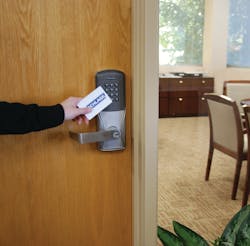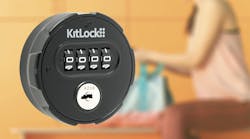We’ve all had this type of service call—the one we dread because the customer’s system is out of date and difficult to work on. Here’s how to turn those legacy headaches into access control migration success stories.
If your customer’s panel is Wiegand-based, you are probably halfway there. Most of the current smart card readers, proximity and biometric readers as well as the integrated locks output Wiegand. Newer technologies providing wireless communication also use Wiegand plus, so you can expand your customer’s existing card-based access control system to gates, remote doors and elevators.
Chances are the same frustrations you have also belong to your customer. To find out if your customer is a prospect for migration to new technologies while keeping their present system, start by verifying their software and panel boards. Do they have the latest software and firmware? Which software version do they have? What version of controller boards? If not the latest, can their panel provider upgrade the system and at what cost? What credentials are they deploying? What types of electronic hardware do they prefer?
Leveraging new technologies
With this information, you can determine the limits of their present system and paint a vision for them of what they could accomplish by leveraging new technologies. Show them the lengths that they can expand their current system without replacing existing equipment. Let them know the cost of this expansion versus an entirely new system.
Verify for them that this present expansion will stand the test of time by pointing out how the new open solution provides gateways for future technologies that will also be on open architecture platforms. Here’s other ammunition:
- Smart cards will be the credential of choice in the near future. If they presently use magnetic stripe or proximity cards, explain why any new readers need to be multi-technology, able to read magnetic stripe, proximity and smart cards. Explain how, once the switchover begins, they won’t need to replace their newer multi-technology readers as they change out legacy readers.
- It’s going to be a hybrid credential world. Although smart cards may be the credential of choice, multiple types of credentials, such as key systems, PINs, various types of cards and biometrics, will still be necessary for certain operations. For instance, it is becoming more and more popular to use biometrics on the data center door. Adding special credentials to such areas is possible. And, even though they may be using multiple credentials, they still will want one system to manage all of them. Let them see how this is possible.
- They need to be ready for new technologies such as NFC (near field communications). With NFC-enabled smart phones, they will be able to employ their employees’/customers’ own smartphones as access credentials, just like they would use smart cards.
By going through this little exercise, you can more easily migrate your customer from their current access control system to a cutting-edge open architecture security solution without scrapping legacy equipment.


